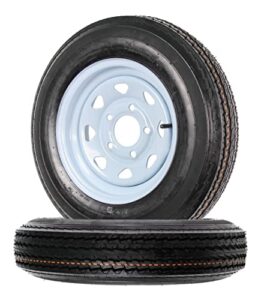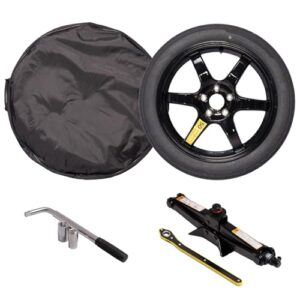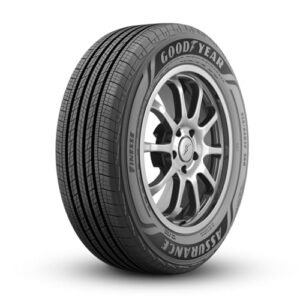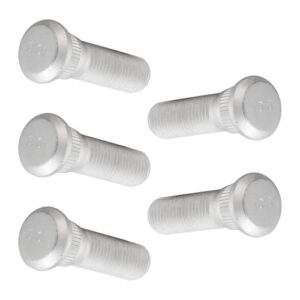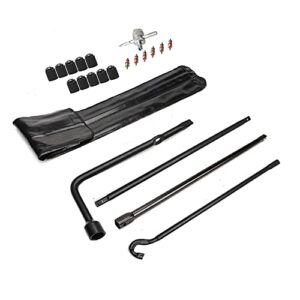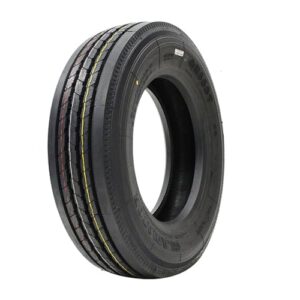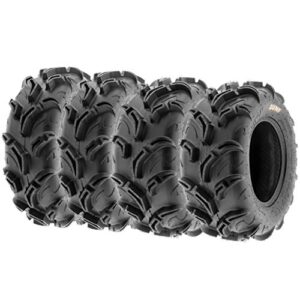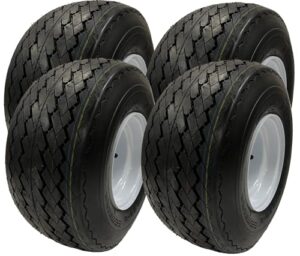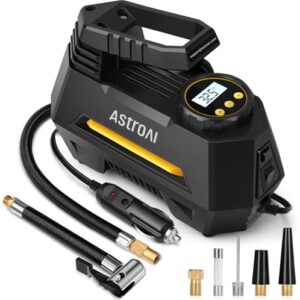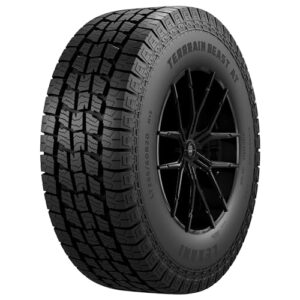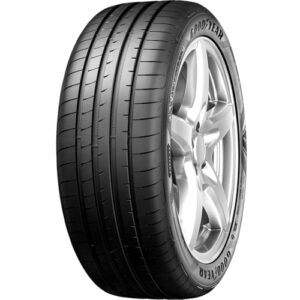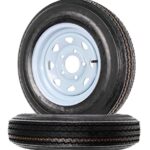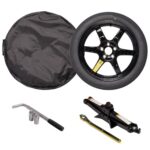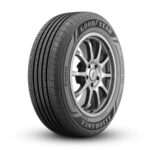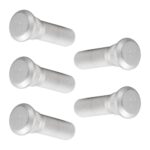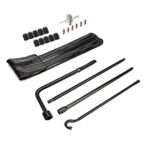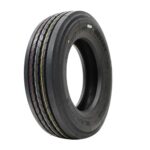Run-flat tires are special tires that work even after getting punctured. It allows you to keep driving for a short distance.
Flat tires are a common problem for drivers. Run-flat tires offer a solution by allowing you to keep moving even with a puncture. These tires are built with strong sidewalls that support the car when air pressure is lost. This feature can save you from being stranded on the road.
In this blog post, we will explore what run-flat tires are and how it work. Understanding these tires can help you decide if it is a good choice for your car. Stay with us to learn more about the benefits and workings of run-flat tires.
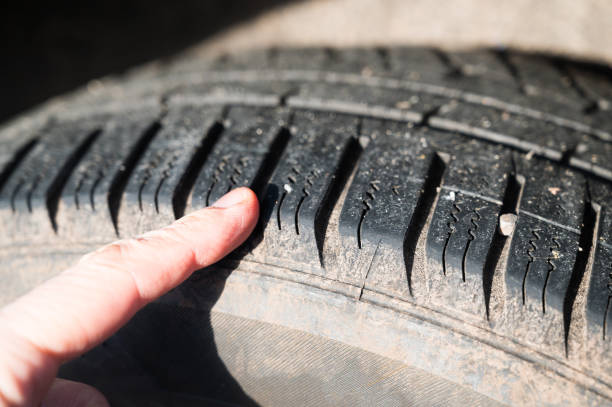
Introduction To Run-flat Tires
Run-flat tires allow a vehicle to keep moving even after a puncture. It works by having reinforced sidewalls. This support helps the tire stay up without air.
Run-flat tires have transformed driving safety and convenience. It provides drivers to continue driving even after a puncture. These tires help avoid dangerous roadside stops. Understanding run-flat tires can help you make better choices for your vehicle.
Brief History
The idea of run-flat tires dates back to the 1930s. Early models were solid rubber tires. It lacked the comfort of modern tires but offered safety. In the 1980s, Michelin introduced the first practical run-flat tire. This model had reinforced sidewalls for extra support. Over time, technology improved. Today, many car manufacturers use run-flat tires as standard equipment.
Importance In Modern Vehicles
Run-flat tires provide crucial benefits in today’s vehicles. It increases safety by reducing the risk of losing control after a puncture. Drivers can travel up to 50 miles at reduced speeds on a flat tire. This allows for a safer trip to a repair shop. Run-flat tires also free up trunk space. Without a spare tire, drivers can use this space for other needs. Many luxury and high-performance cars use run-flat tires. This ensures a blend of safety and convenience for their owners.
“`
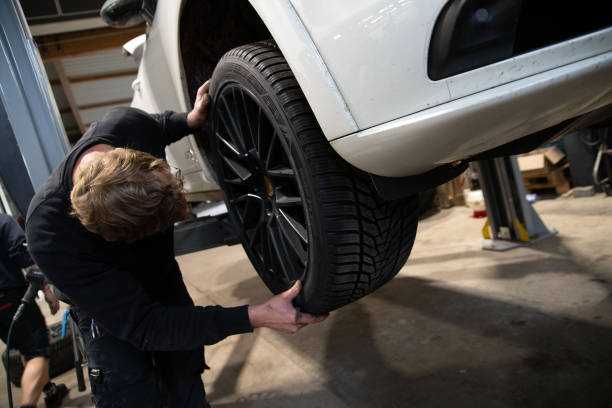
How Run-flat Tires Work
Understanding how run-flat tires work can give drivers peace of mind. These tires allow you to keep driving even after a puncture. Let’s explore the two main types of run-flat tire technologies.
Self-supporting Technology
Self-supporting run-flat tires have reinforced sidewalls. These sidewalls are much stronger than those on regular tires. When a puncture occurs, the strong sidewalls support the vehicle’s weight. This technology lets you drive for a short distance at a reduced speed, usually up to 50 miles at 50 mph.
Here’s a quick overview:
- Reinforced sidewalls: Provide support after puncture
- Drive limited distance: Up to 50 miles
- Reduced speed: Maximum of 50 mph
Auxiliary-supported Technology
In auxiliary-supported run-flat tires, the support system is inside the wheel. This system includes a ring or an additional structure attached to the wheel. When the tire loses air, the support system carries the vehicle’s weight. This technology also allows for a limited driving distance and speed.
Key features include:
- Internal support system: Supports vehicle weight
- Limited driving distance: Similar to self-supporting tires
- Reduced speed: Maximum of 50 mph
Both technologies aim to provide a safe and controlled driving experience after a tire puncture. Understanding these features can help you make an informed decision about using run-flat tires.
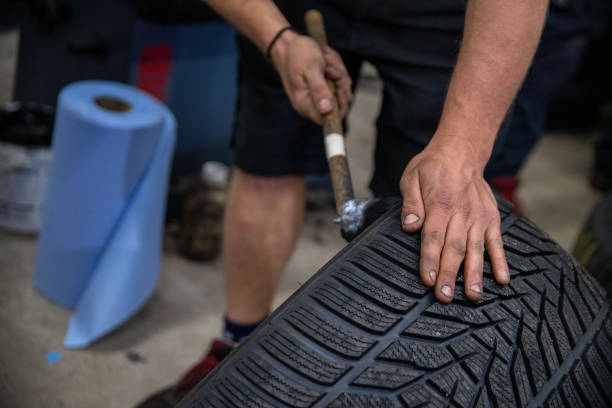
Advantages Of Run-flat Tires
Run-flat tires have become a popular choice for many drivers. It provides unique benefits that improve the driving experience. Below are the key advantages of run-flat tires.
Safety Benefits
Run-flat tires offer significant safety benefits. It provides you to continue driving even after a puncture. This means you can avoid dangerous roadside stops.
These tires maintain their shape and support the vehicle’s weight. This helps prevent loss of control during a tire blowout. It can be a lifesaver in high-speed situations.
Run-flat tires also reduce the risk of sudden tire failure. This gives you more time to reach a safe location or tire repair shop.
Convenience Factors
One of the biggest convenience factors of run-flat tires is the elimination of the need for a spare tire. This frees up trunk space for other items.
With run-flat tires, you can drive up to 50 miles after a puncture. This gives you time to find a repair shop without needing to call for roadside assistance.
These tires also save time and effort. You won’t need to change a flat tire in bad weather or on a busy road.
Overall, run-flat tires provide peace of mind. It ensures you can reach your destination safely and conveniently, even with a puncture.
Disadvantages Of Run-flat Tires
Run-flat tires offer many benefits. But it comes with certain drawbacks. Understanding these can help you make an informed decision.
Cost Considerations
Run-flat tires often cost more than regular tires. This is due to their advanced technology. The extra materials used also add to the cost. This means you may need to spend more upfront.
Replacing run-flat tires can also be expensive. It may not last as long as traditional tires. This means you might have to replace them more often. Also, not all tire shops carry run-flats. This can lead to higher costs if you need a quick replacement.
Performance Issues
Run-flat tires can impact your car’s performance. It usually provides a stiffer ride. This can make driving less comfortable. The stiffer design helps the tire maintain its shape. But it can also lead to a rougher ride.
Handling may also suffer with run-flat tires. It tends to be heavier. This can affect your car’s agility. You may notice changes in the way your car corners or brakes. Some drivers feel less connected to the road with run-flats.
In some cases, run-flat tires can be noisier. The extra materials used can produce more road noise. This can make your ride less pleasant, especially on longer trips.
Types Of Run-flat Tires
Run-flat tires come in different types. Each type offers unique advantages and features. Understanding these types can help you choose the right run-flat tire for your vehicle.
Self-supporting
Self-supporting run-flat tires have reinforced sidewalls. These sidewalls can support the vehicle’s weight. Even after losing air, the tire won’t collapse. You can continue driving at reduced speeds for a limited distance. Typically, around 50 miles. This gives you enough time to reach a repair shop.
Support Ring System
The support ring system uses a ring attached to the wheel. This ring supports the tire if it loses air. Even with no air pressure, the ring keeps the tire’s shape. This system allows for continued driving. Usually up to 100 miles. It provides more stability than self-supporting tires.
Maintenance And Care
Run-flat tires provide peace of mind by allowing drivers to continue driving after a puncture. Proper maintenance and care ensure these tires last longer and perform well. Regular inspection and timely replacement are key to keeping your run-flat tires in top shape.
Inspection Tips
Check your run-flat tires for visible damage regularly. Look for cuts, punctures, and bulges. Use a pressure gauge to check tire pressure monthly. Run-flat tires may not show low pressure signs.
Inspect tire tread depth. Use a tread depth gauge. Ensure it’s above 2/32 of an inch. Uneven wear may indicate alignment issues. Correct these promptly to avoid further damage.
Replacement Guidelines
Replace run-flat tires based on the manufacturer’s recommendations. Generally, this ranges between 25,000 to 30,000 miles. Consider replacing them earlier if you frequently drive in harsh conditions.
Even if the tread is good, replace tires older than six years. Rubber deteriorates over time, affecting performance. Check the tire’s sidewall for the manufacturing date.
After a puncture, inspect the tire. Some run-flat tires can be repaired, but often replacement is safer. Always consult a professional for advice on repair versus replacement.
Choosing The Right Run-flat Tires
Choosing the right run-flat tires can be a task. It offers safety and convenience. But not all run-flat tires are the same. It’s important to know what to look for.
Factors To Consider
Several factors matter when choosing run-flat tires. Consider your driving habits. Do you drive long distances or just around town? Think about the weather. Some tires are better for snow. Others work best in rain. Check the speed rating. It shows how fast you can safely drive. Also, look at the load index. This tells you how much weight the tire can carry.
Price is another factor. Run-flat tires can be more expensive. But it may save you money in the long run. You won’t need a spare tire. And you won’t be stranded with a flat. Comfort is also key. Some run-flat tires give a smoother ride. Others might feel stiffer.
Top Brands
Several brands make great run-flat tires. Michelin is well-known. It offers high-quality options. Their tires are durable and reliable. Bridgestone is another top brand. It has a wide range of run-flat tires. Goodyear also makes excellent choices. Their tires are known for great traction and long life.
Pirelli is famous for performance. Their run-flat tires are popular in sports cars. Continental offers good value. Their tires balance cost and quality. Each brand has its strengths. Choose one that fits your needs. Check reviews and ratings. It is can help you make a better choice.

Frequently Asked Questions
What Are Run-flat Tires?
Run-flat tires allow you to keep driving after a puncture. No need to change immediately.
How Do Run-flat Tires Work?
Run-flat tires have reinforced sidewalls. This supports the vehicle even without air pressure.
Are Run-flat Tires Safe?
Yes, run-flat tires are safe. That gives you time to reach a repair shop.
Can Run-flat Tires Be Repaired?
Sometimes. It depends on the damage. Always consult a professional for advice.
Conclusion
Run-flat tires offer peace of mind during unexpected punctures. It maintain shape and support, allowing you to drive safely. These tires eliminate the immediate need for a spare. This can save time and reduce stress during emergencies. Run-flat tires are slightly more expensive but worth the investment.
It provides an added layer of security for drivers. Always check compatibility with your vehicle before buying. Consult a professional for the best advice. Choose run-flat tires for a safer driving experience.




